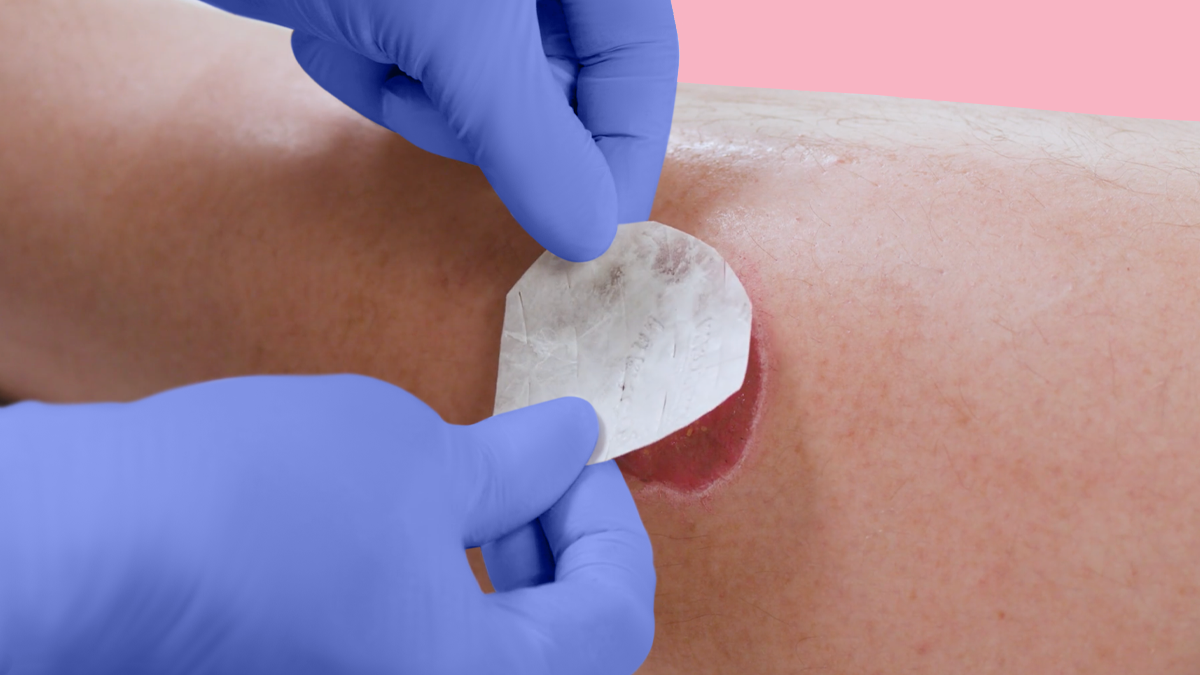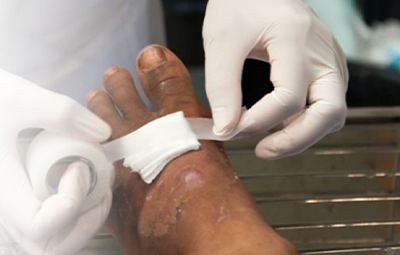Collagen wound healing: Is it effective for stalled wounds?
Learn more about how collagen works and if it’s right for chronic wounds.

Have you considered the role of collagen in healing stalled wounds? If you’re not using collagen in wound healing, it might be time to consider it as part of your wound care strategy. When wounds are stalled, it’s often because certain enzymes are destroying collagen in the wound, which is essential to healing.
When a wound does not progress through the normal wound healing process, it’s possible that the wound is stuck in the inflammatory phase. At this point, enzymes in the wound that should have disappeared long ago are still present. These enzymes could be destructive and include these two typical enzyme types:
- Elastase: Secreted by neutrophils, which are part of the immune system, elastase is an enzyme that could potentially interfere with re-epithelialization and the formation of new tissue during a wound’s life. Elastase destroys elastin and other enzymes too—even the ones that could be useful to the wound, such as tissue inhibitors of matrix metalloproteinases (TIMPs).
- Matrix metalloproteases (MMPs): MMPs are proteases that are associated with metal ions, and the worst of them are specific to collagen (or fragments of collagen). They seek out collagen molecules and chemically break them down.
TIMPs are thought of as “anti-MMPs.” They’re beneficial when they outnumber the MMPs for the wound to heal normally. However, in chronic wounds, it’s the opposite: there are more MMPs than TIMPs, which means more of the collagen-destroying enzymes.
How can collagen wound dressings help?
Caregivers need to take a multifaceted approach to move stalled wounds to the next stage of wound healing. One strategy is to bring fibroblasts to the wound bed. Fibroblasts are special skin cells that make and secrete collagen. An effective method to do that is to plant native collagen dressings.
Collagen can bind with the harmful MMPs, which keeps the MMPs occupied in the activity of breaking down the dressing material instead of destroying the new collagen made by the fibroblasts.
Enzymes are concentrated in the dressing, where collagen is plentiful, instead of in the tissue, where the fibroblasts are putting out the body’s own collagen at low concentrations. Denatured collagen, available in some wound care products today, is processed chemically to the extent that it has lost the sophisticated triple helix structure of collagen, which is particularly attractive to fibroblasts.
Fibroblasts also thrive in structures where they can spread out three-dimensionally (as they would in a real-life wound environment) and essentially “be themselves.” In other words, they like to be doing the things they’re meant to be doing, like secreting collagen and other important materials of the extracellular matrix. That’s why using a collagen wound dressing with a noticeable three-dimensional structure allows the fibroblasts to act as normally as they possibly can.
How do collagen-based dressings work?
The exact mechanisms of action for a collagen wound dressing is still not completely understood. We know that the dressing material binds with the destructive elastase enzyme. This interaction helps reduce the concentration of the elastase in the wound bed, which means that less of the wound bed’s elastin is destroyed.
But perhaps more importantly, elastase is known to play a role in creating the final destructive form of MMPs. Taking elastase out of the equation dramatically reduces the potential that MMPs will be newly created in the wound bed.
Elastase is also known to attack the beneficial TIMP enzymes that keep the MMP in check. Reducing elastase allows the TIMP concentration to reach a level that keeps MMP activity low in the wound bed.
When the collagen dressing is applied to a stalled wound, it essentially gets “taken apart” (in a chemical sense) by the MMPs that it binds to. The byproducts of this binding are collagen fragments, which are then consumed by the fibroblasts. The fibroblasts synthesize “fresh” collagen (or the body’s own de novo collagen) and secrete it out into an environment now relatively free of MMPs. Without the removal of the MMPs, the newly synthesized collagen would have been destroyed.
Key takeaway
When it comes to stalled wounds, collagen wound healing is one tool in a caregiver’s toolbox. The chemical reactions between the dressing and fibroblasts helps keep destructive enzymes away from the wound and helps the wound progress.




